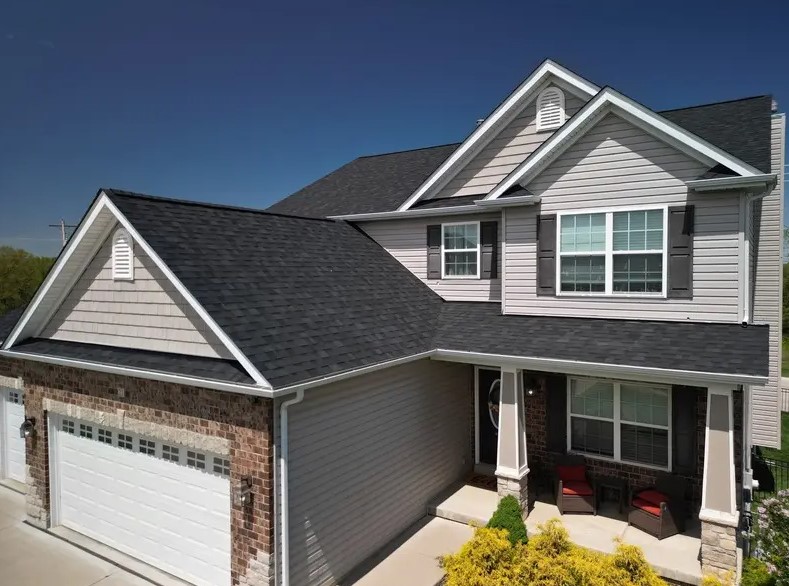If you’ve spent a summer in Oklahoma, you know the heat doesn’t just hit hard—it hits your utility bill, too. That’s when homeowners start asking: “Are energy efficient roofing materials worth it?” or “Do Oklahoma energy rebates make upgrades more affordable?” The truth is, pairing smart roofing with code-compliant installation can deliver both comfort and long-term savings.
Many of those savings start with your roofing system. Whether you’re planning a full replacement or just researching upgrade options, our residential roofing services can help you understand what makes the most sense for your home and your goals.
In this guide, you’ll learn:
- What qualifies as energy-efficient roofing materials
- How to weigh upfront investment against long-term savings
- Whether Oklahoma energy rebates or credits can offset cost
- How these upgrades influence resale and home value
Looking to improve your home’s comfort and lower energy expenses? Honor Roofing & Construction can help you make the right decision.
Why Energy Efficiency Matters in Oklahoma
Attic temperatures regularly climb above 160°F during Oklahoma summers. Overheated ceilings strain HVAC systems, degrade roofing materials, and drive utility bills up. Investing in reflective roofing and improved insulation helps keep heat out and extends the smart life of your roof.
New weather codes in Edmond, Nichols Hills, and across Oklahoma prioritize reflective surfaces, insulation, and proper ventilation. Pairing energy-efficient roofing materials with correct installation ensures you meet code and reduce long-term costs.
What to Prepare Before Moving Forward
Before exploring options:
- Review your past year’s energy bills
- Estimate your roof’s current age and material type
- Check HOA rules or permit requirements in your area
- Gather info on available Oklahoma energy rebates or incentives
- Set your long-term home goals (e.g., energy savings, resale, insurance credits)
Material Comparison: Energy Efficiency vs. Cost
Roofing Options with Energy Benefits
Cool Shingles
- Investment: Slightly higher than standard shingles
- Savings: Up to 15% reduction in attic heat load
- Longevity: Moderate; lifespan similar to architectural shingles
- Ideal for: Homeowners upgrading for moderate savings and ease of install
Reflective Metal Roofing
- Investment: Higher upfront cost
- Savings: 15–20% utility savings annually in hot climates
- Longevity: 40–70 years; excellent storm resistance
- Ideal for: Long-term owners in hail-prone zones
Impact-Resistant Shingles
- Investment: Modestly higher than typical architectural shingles
- Savings: Moderate; combined with better durability and insurance credits
- Ideal for: Those seeking a balance of value, protection, and energy efficiency
Case in point: A Norman homeowner installed cool shingles and attic ventilation, then saw energy use drop by 10% within one year—plus a higher appraisal compared to nearby homes. For more on long-term resale value, visit Energy‑Efficient Roofing & Siding in Oklahoma: Long‑Term ROI.

Deep Dive: Rebates, Risks & Warranty Considerations
Rebates & Financial Incentives
Some utilities and federal programs offer rebates or credits for ENERGY STAR–rated cool roofs or insulation upgrades. These incentives may offset part of the initial cost—check local eligibility first.
Manufacturer Warranty & Certification
We install certified products from CertainTeed, IKO, and TAMKO, ensuring full warranty coverage, and often increasing resale appeal.
Oklahoma-Specific Risks
High UV exposure, hail, and strong winds demand correct installation—especially for energy-efficient systems. Proper flashing, ventilation, and roof structure reinforcement are essential to preserve energy savings and roof longevity.
Pros & Cons at a Glance
| Material/Upgrade | Pros | Considerations |
| Cool Shingles | Affordable, energy savings, easy retrofit | Moderate lifespan, less hail resistance |
| Metal Roof + Radiant Barrier | Superior energy savings, durability | Higher initial cost, careful installation needed |
| Impact-Resistant Shingles | Good balance of hail protection and efficiency | Less reflective than metal, modest price increase |
Energy-Saving Roofing FAQs for Oklahoma Homes
What are energy-efficient roofing materials?
Energy-efficient roofing materials are those designed to reflect sunlight, reduce heat absorption, and improve your home’s cooling performance. They include cool shingles, reflective metal, and ENERGY STAR–rated products.
Are Oklahoma energy rebates still available?
Yes, energy rebates in Oklahoma are available through certain utility companies and federal programs. They’re often tied to specific materials and energy-efficiency ratings, so it’s important to verify eligibility before installation.
Will energy-efficient roofing really lower utility bills?
Yes, energy-efficient roofing can significantly reduce your cooling costs—often by 10–20%—especially when combined with proper attic ventilation and insulation.
How long will energy upgrades take to pay for themselves?
Most homeowners see payback on energy-efficient roofing upgrades in 8 to 15 years, depending on energy usage and local utility rates.
Are energy rebates tied to specific roofing brands or materials?
Yes, some rebates require installation of ENERGY STAR–certified materials or specific brands. Working with a certified contractor ensures your roof qualifies.
Final Takeaway: Invest Wisely, Save Comfortably
Choosing energy-efficient roofing materials isn’t just about aesthetics—it’s a way to take control of your utility bills, extend the life of your home, and improve resale value. Whether you’re planning to stay long-term or sell soon, these upgrades deliver measurable ROI.
At Honor Roofing & Construction, we help you evaluate your goals, navigate rebate options, and get the most from your investment—with no pressure.
Ready to make your home more efficient?
Schedule your free inspection today.
We’ll check your roof’s performance, review material options, and help you build a smarter, cooler home.


